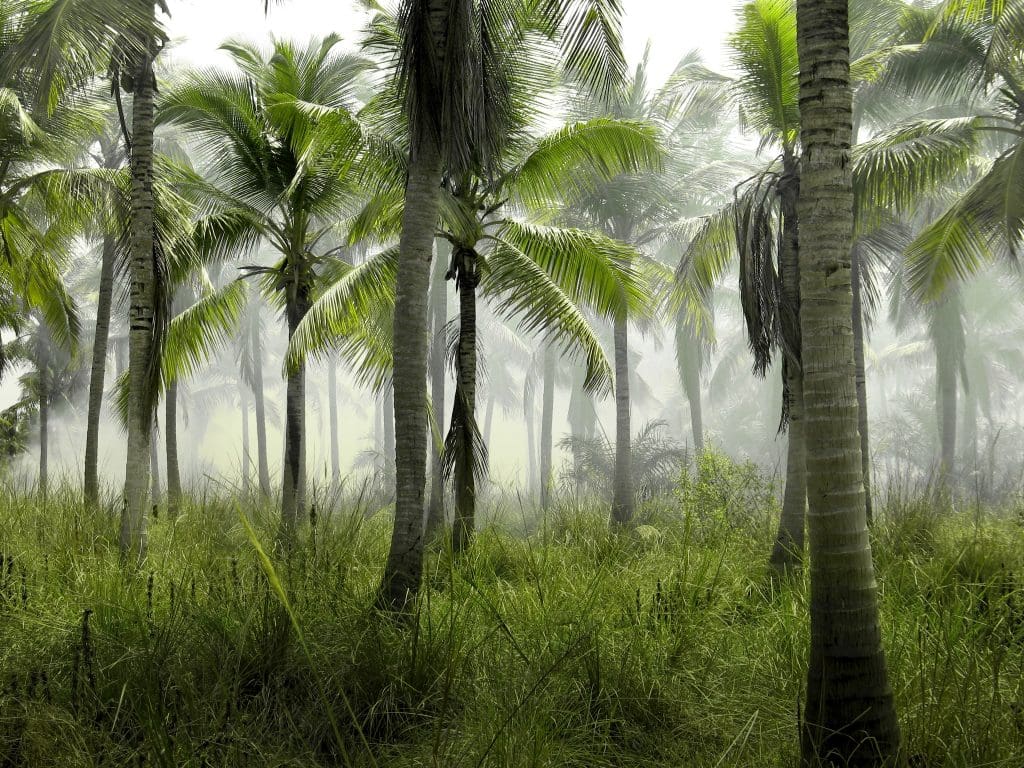Having visibility into our supply chain and work on the ground is critical. That’s why Cargill is using satellite images to see what’s happening in landscapes around the areas from where it sources its cocoa.
These images help our team identify places where forests and other sensitive ecosystems have been degraded or where intact forests remain in proximity to cocoa farms. Pinpointing these locations is essential — it’s where Cargill is taking action on the ground to prevent further deforestation and restore cocoa production landscapes.
Identifying risk and working with farmers to prevent future forest loss is one way Cargill is making progress toward its commitment to end deforestation in its supply chains. Our team is accelerating our efforts to achieve that commitment, focusing on our cocoa, palm and soy supply chains and identifying areas with the greatest risk of deforestation.
As International Day of Forests on March 21 brings attention to our collective efforts, it also highlights how far we all still need to go to protect at-risk forests and native vegetation. We know we must hasten the pace of change. Technology is key to expediting our progress.
Mapping farm locations
The first step is knowing where to look. The solution used by Cargill starts with GPS devices to collect digital information about farm boundaries and create polygon maps of the farms from which we source cocoa. These maps help us understand each farm’s size and perimeter. So far, we have mapped more than 153,000 farms in Côte d’Ivoire and Ghana, representing over 951,000 acres of cocoa farmland.
Applying innovative technology
Then, we use satellite technology to determine where forests remain and where forest loss has taken place. We do this by using geo information systems (GIS) software tools, as well as geospatial data and analytical methods available in the World Resources Institute’s (WRI) Global Forest Watch Pro platform. By overlaying and combining the farm maps we’ve collected with the geospatial satellite data, our teams can see changes in tree cover that have occurred on our cocoa suppliers’ farms as well as in nearby forests and protected areas.
Identifying deforestation risk
By examining the images, Cargill can identify the farms closest to intact forest landscapes and protected area boundaries. We know that their proximity places these farms at higher risk for contributing to future deforestation.
To further analyze risk, Cargill developed a methodology for evaluating farmer organizations, district buying stations and other cocoa sourcing structures to rank their relative risk. Risk rankings take into consideration past deforestation-related impacts and potential for future deforestation. These insights help us to prioritize interventions in the areas of highest risk within each sourcing geography.
Increasing transparency to farmThe next step in determining where we need to take action is to trace the cocoa that enters our supply chain back to the farms where it originated in order to confirm the cocoa we purchase is actually coming from the farms we’re monitoring.
In Ghana, we trace bags of cocoa using bar-coding technology, while farmer cooperatives in Côte d’Ivoire are deploying a management system that creates a digital link between unique farmer IDs, farm locations and cocoa bag purchases.
We are making great progress in tracing Cargill’s cocoa supply chain. We have achieved 100 percent traceability for directly sourced cocoa in Ghana, and we are aiming to achieve the same in our Côte d’Ivoire direct supply chain (so far, we’ve reached 74 percent). Achieving traceability is essential to help Cargill meet its Cocoa & Forests Initiative, Protect Our Planet and Cargill Cocoa Promise commitments.
Working with farmers
All of this tracking, mapping and ranking leads us to the most crucial step for making change: partnering with farmers and farmer organizations. The insights we collect can help Cargill determine precisely where to invest resources and how to tailor its farmer engagement initiatives to prevent new deforestation.
I was inspired during the GreenBiz 20 conference to hear so much emphasis on engaging farmers in sustainability efforts, given that working directly with farmers is critical to everything we do at Cargill.
With the data in hand, we work closely with partners to understand the local context, then design relevant, targeted solutions that address underlying socio-economic causes of deforestation and forest degradation.
In Côte d’Ivoire and Brazil, for example, we have learned that community-based agroforestry — the integration of trees onto farms or into the wider landscape — can help tackle some of these underlying causes. Besides improving soil fertility and habitats, growing different tree species on cocoa farms can provide alternative sources of income, such as fruits, nuts or fibers. Planting trees also helps stabilize cocoa yields by creating a favorable microclimate and supporting pollination. This triggers a virtuous cycle that increases incomes for individual farmers and improves communities’ economic resilience.
At Cargill, we continue to find new ways to use cutting-edge technology to improve transparency and invest in platforms that will help move our industry forward. That innovation — combined with our commitment to engaging with farmers on solutions that account for social, economic and environmental factors — will drive industry change in addressing deforestation.









